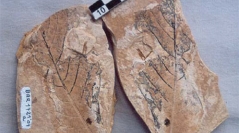

 Comptes Rendus Palevol
5 (1-2) - Pages 89-98
Comptes Rendus Palevol
5 (1-2) - Pages 89-98In the study of human evolution, bipedalism is considered to be a distinctive trait of the family Hominidae. The oldest evidence of bipedalism is found in the two preserved femurs of Orrorin tugenensis , from the Upper Miocene from Kenya. Claims of bipedalism in Ardipithecus and Sahelanthropus have to be re-evaluated because of insufficient evidence. It has been widely accepted that hominids (and thus bipedalism) emerged in a savannah environment. However, it is now clear that the earliest bipeds are associated with forested environments as proved by the flora and the fauna of the Lukeino Formation (Kenya, 6 Ma).
Bipedalism, Miocene environments, Orrorin tugenensis, Sahelanthropus, Ardipithecus